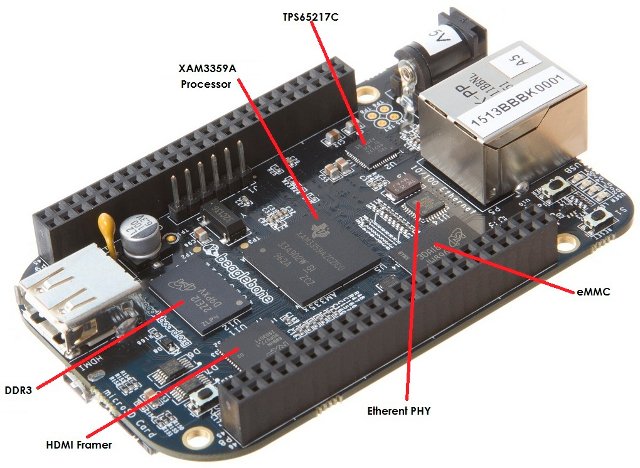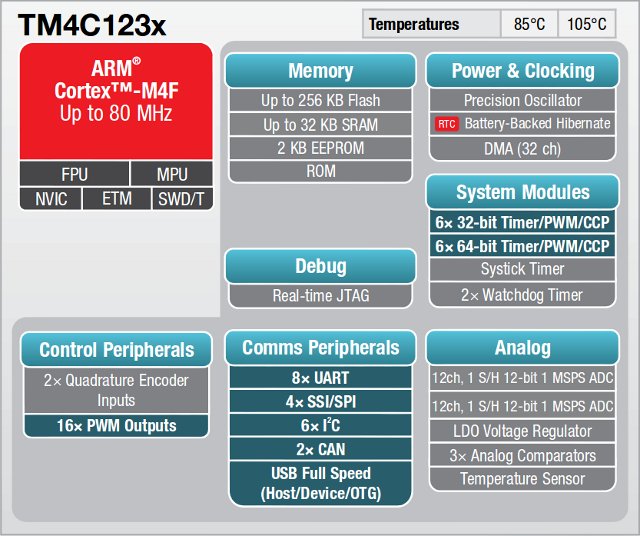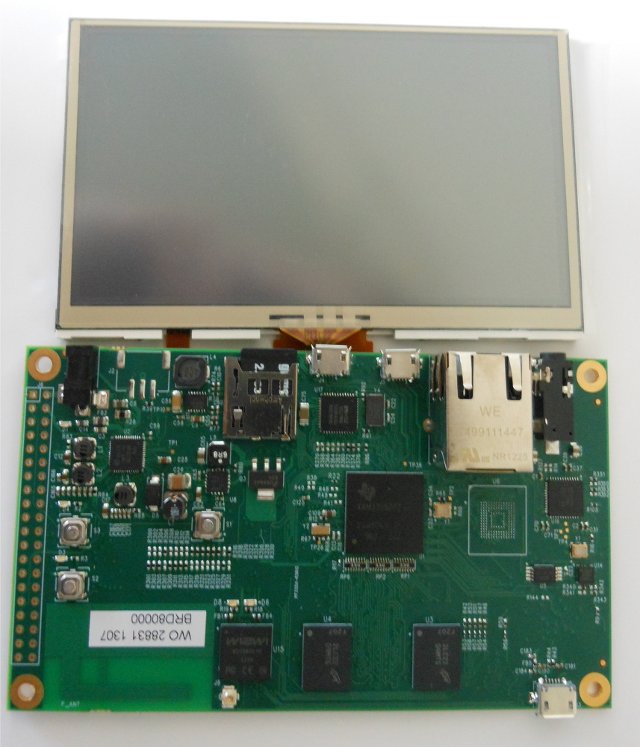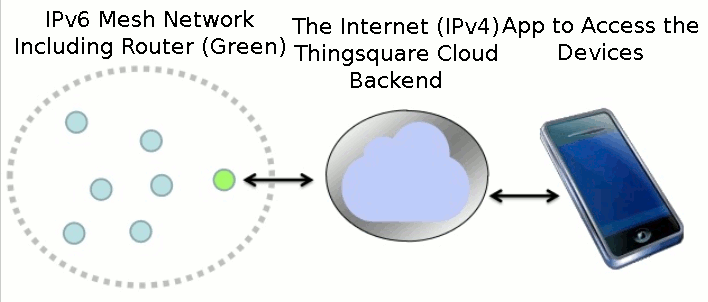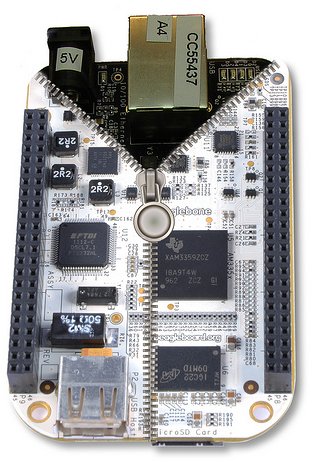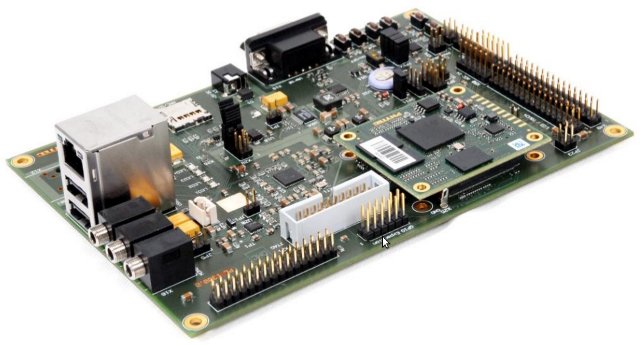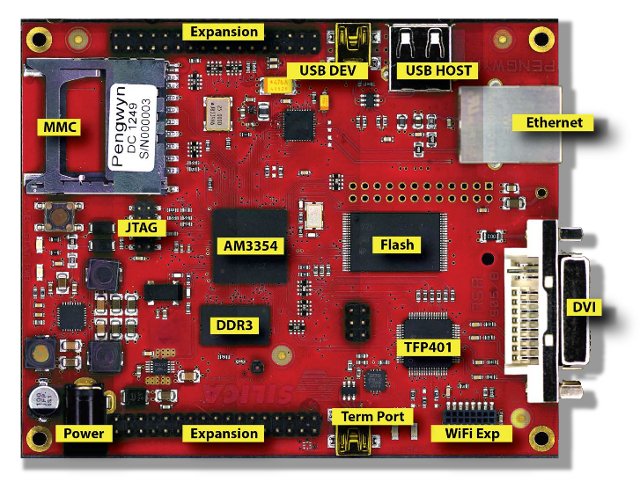We’ve already known that a new, faster and cheaper BeagleBone is on the way for a little while, but very few details were provided at the time. There are now better pictures, the specifications are available, and it looks like the new BeagleBone will be called BeagleBone Black. BeagleBone Black Specifications: SoC – Texas Instruments Sitara AM3359AZCZ100 Cortex A8 @ 1 GHz + PowerVR SGX530 GPU System Memory – 512 MB DDR3L @ 400 MHz Storage – 2GB eMMC + micro SD slot USB – USB0 (client mode) via mini USB, USB1 (host) type A socket Serial Port – UART0 via 3.3V TTL header Ethernet – 10/100, RJ45 Video Output – micro HDMI with EDID support, up to 1280×1024 resolution. Audio Output – Via HDMI Expansion Connectors – Power, McASP0, SPI1, I2C, 65x GPIOs, LCD, GPMC, MMC1/2, 7x AIN (1.8V MAX), 4x timers, 3x serial ports, CAN0, EHRPWM0/2, XDMA interrupt, […]
Texas Instruments Announces Tiva Cortex M4 MCUs and $12.99 LaunchPad Evaluation Kit
Texas Instruments has just announced the Tiva ARM MCU platform, and specifically the Tiva C Series TM4C123x ARM Cortex-M4 MCUs, which are the first Cortex-M MCUs to be built on 65 nanometer flash process technology. The Tiva C Series TM4C123x MCUs, formerly known as Stellaris LM4F MCUs, are available now and target home, building and industrial automation. Key features and benefits of Tiva C Series MCUs: MCU Core – ARM Cortex-M4 floating-point core, operating at up to 80 MHz. Mixed-signal applications with high-performance analog integration – 2×12-bit ADC and 3 comparators.12-bit ADC accuracy is achievable at the full 1 MSPS rating without any hardware averaging. On-chip connectivity options – USB (host, device and On-The-Go), UARTs, I2C, SSI/SPI, CAN, etc.. Non-volatile storage of user interface or configuration parameters to reduce system cost – Thanks to integrated EEPROM. Low power – Standby currents as low as 1.6 uA. Large choice of MCU […]
Gumstix Unveils $249 Pepper Single Board Computer Powered by TI Sitara AM3359
Gumstix has just announced a new single board computer for Linux embedded development and experimentation. Pepper is powered by Texas Instruments Sitara AM3359 Cortex A8 processor, and comes with 512MB DDR2, WiFi and Bluetooth connectivity, a 4.3″ LCD touchscreen and more. Gumstix Pepper Key features: Processor – Texas Instruments Sitara AM3359 Cortex A8 processor up to 720 MHz System Memory – 512MB DDR2 Storage – microSD card slot (No flash) Connectivity: Wifi – 802.11 b/g/n 10/100/1000M Ethernet Bluetooth 3.0 Display – Samsung 4.3″ LCD resistive touchscreen (480 x 272) USB – 2x USB OTG connectors Expansion headers – For I2C, SPI and UARTs GPIO-controlled push buttons and LEDs Sensors – 3D Accelerometer (ST LIS33DE) Power – 5V Since there’s no flash, a microSD is used to boot the board. Gumstix provides a Linux distribution built with the Yocto Project which you” eventually be able to download here (the page is […]
Thingsquare Mist – Open Source Firmware for The Internet of Things
Thingsquare recently released the source code for the Thingsquare Mist firmware, an ultra lightweight router software (<4 kB memory) for the Internet of Things based on open Internet standards such as IPv6, RPL (Routing Protocol for Lossy networks), and 6lowpan. Thingsquare Mist allows to connect battery-powered wireless micro-controllers to the Internet, and is currently used in applications such as smart light bulbs, connected home appliances, and connected cities. The IPv6 mesh network is composted of nodes with a low power radio that communicate with the Mist router (Green), which in turn connect to the Internet and Thingsquare Cloud backend (Thingsquare Haven) to store the data, and/or receive control commands via Ethernet or Wi-Fi. The end users can then use an App to monitor, and/or control the devices remotely. Thingsquare Mist uses IETF RPL IPv6 mesh routing protocol (pronounced “ripple”) for IPv6 nodes communications. Thingsquare Mist runs on several low-power wireless […]
ISEE Introduces IGEP COM CYGNUS & AQUILA Powered by TI Sitara AM335x Processor
ISEE will officially launch and showcase 2 new computers-on-module at Embedded World 2013 on February 26-28, in Nuremberg, Germany: IGEP COM CYGNUS and IGEP COM AQUILA. Both CoM shares the same characteristics except the former is powered by TI Sitara AM3352 (Cortex A8, no GPU) and the later by TI Sitara AM3354 (Cortex A8 + PowerVR GPU). This makes the CYGNUS suited for cost sensitive applications such as industrial control, home automation, and test and measurement devices, and the AQUILA for applications that requires more advanced graphics and multimedia capabilities such as gaming, auto infotainment and navigation devices. The key specifications of the 2 modules are as follows: Processor – Texas instruments Sitara AM3352 Cortex A8 @ 720 Mhz (CYGNUS) and AM3354 Cortex A8 @ 720 Mhz + PowerVR SGX GPU (AQUALIA) System memory – 256 MB DDR3 SDRAM, 303 MHz, 16-bit Storage – 128 MB SLC NAND FLASH + […]
A New, Faster, and Cheaper Beaglebone is On its Way
Beaglebord.org community is currently teasing a new Beaglebone on their website. At this time information is not complete, but we already know it will be “significantly cheaper” than the existing Beaglebone, feature a processor with higher performance (Albeit the picture shows TI Sitara AM3359 which is about the same as AM3358 + Ethercat), and come with 512 MB DDR3L RAM (instead of 256 MB DDR2), 2GB eMMC Flash, and onboard HDMI output. The new Beaglebone will keep supporting Angstrom, Ubuntu and other Linux distributions. Hardware expansion boards (cape) designed for the old model will still be fully compatible with the new Beaglebone. You’ll need to wait April to get hold of the new Beaglebone. Until then, you can register your interest on Element14/Farnell to be informed when the board becomes available. Another way to find out more is to attend the Embedded Linux Conference 2013 which is taking place right […]
Phytec India Unveils “Open Board-AM335x” Development Kit
PHYTEC has launched the Open Board-AM335x development kit in order to support Linux and Android development on Texas Instruments AM335x Sitara ARM Processors in India. The Open Board-AM335x is comprised of a baseboard and phyCORE-AM335x SoM, and comes with 512 MB DDR3 SDRAM, 512 MB NAND Flash, and optionally, 8 MB SPI Flash. The baseboard is open source hardware as schematics and Gerber/BOM are freely available. Here are the key features of Phytec Open Board-AM335x: SoM – PhyCore-AM335x with ARM Cortex-A8 processors @ 720 MHz (AM3352, AM3354, AM3356, AM3357, AM3358 and AM3359) System Memory – 512 MB DDR3 RAM Storage – 512 MB NAND + SD Card slot + 8 MB SPI NOR Flash (Optional) + 32 KB EEPROM (Optional) Serial – 1x UART (RS232) + 4x UART (TTL) USB – 1x USB Host + 1x USB OTG Connectivity – 1x 10/100/1G Ethernet Audio – WM8974 Codec Display Interfaces – 24 bpp TTL […]
SILICA Pengwyn Low Cost Open Industrial Development Platform Powered by Sitara AM3354 Processor
At the end of January, SILICA, an Avnet subsidiary, announced the Pengwyn, a single board computer based on Texas Instruments Sitara AM3354 Cortex A8 processor. The board targets industrial customers, and the company promotes it as “an open platform to develop applications under Linux or Windows Embedded operating systems”. Here are the specifications of the Pengwyn board: Texas Instruments Sitara AM 3354 ARM Cortex-A8 MCU @ 720 MHz System Memory – 256 MB DDR3 Storage – 1 GB Nand Flash, 32 MB SPI Flash Memory, and microSD slot (if not used with Wi-Fi/Bt modules) Connectivity and expandability USB Host and Device Ports RJ-45 Ethernet Port Connector for optional 1 GB Ethernet Port 2x connectors for generic expansions modules SDIO/MMC Port (can be used for optional WI-FI/bluetooth modules) DVI Display Port Silica will provide Linux (Arago Project, an OpenEmbedded based Distribution) and Windows Embedded Compact 7 BSP and images, as well as […]


